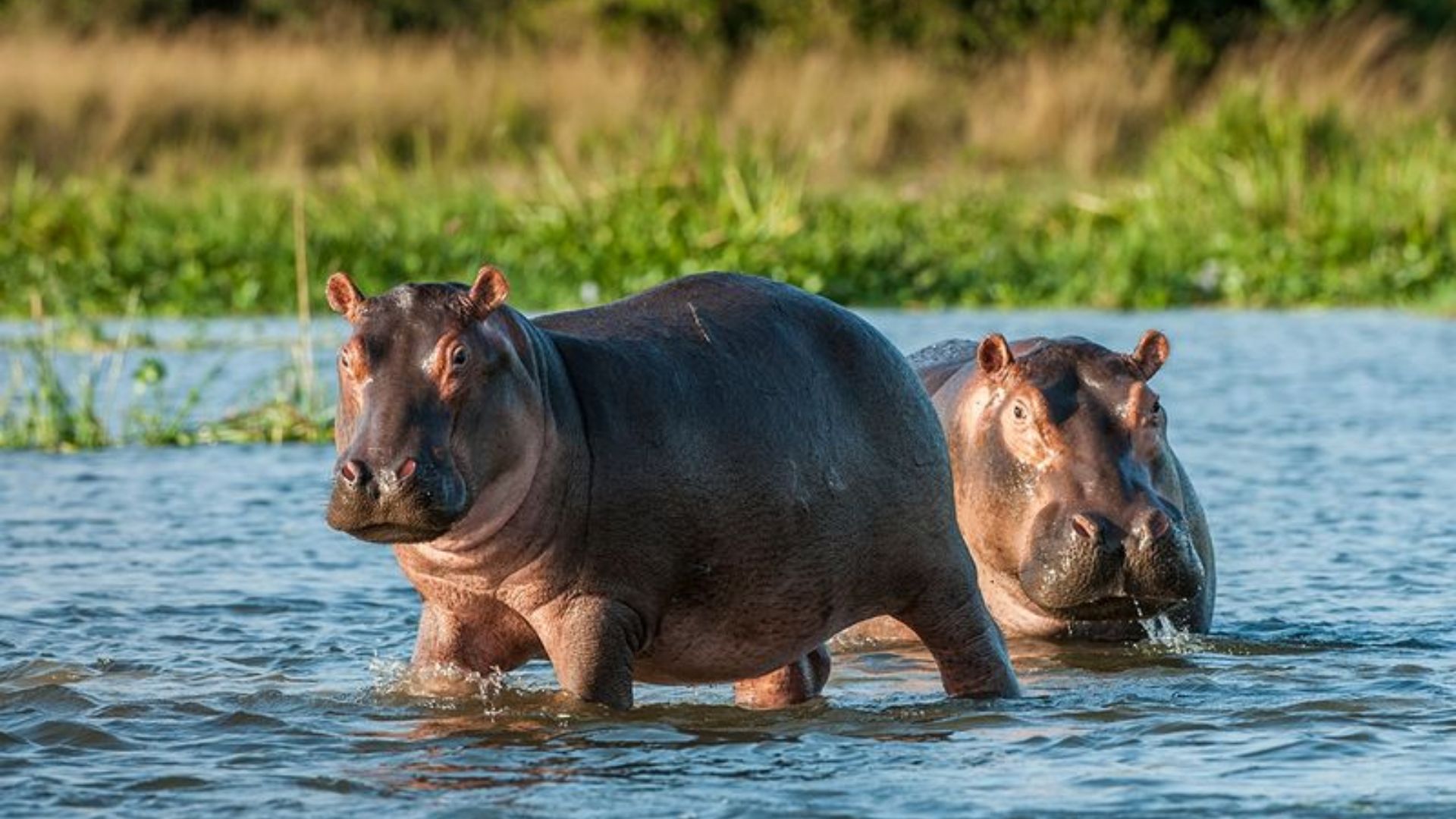Swimming is a natural skill that many animals have mastered, and some do so in ways that might surprise you. While fish and marine mammals are obvious contenders, there are countless land-based animals that also excel in the water.
Today I’ll tell you about 13 such animals – creatures that may not seem like natural swimmers but have evolved remarkable abilities to thrive in aquatic environments.
From tiny insects that glide across the surface to large mammals that effortlessly navigate through deep waters, these animals demonstrate the incredible diversity of survival strategies in nature.
Get ready to be amazed by their unexpected swimming talents!
1. Elephants
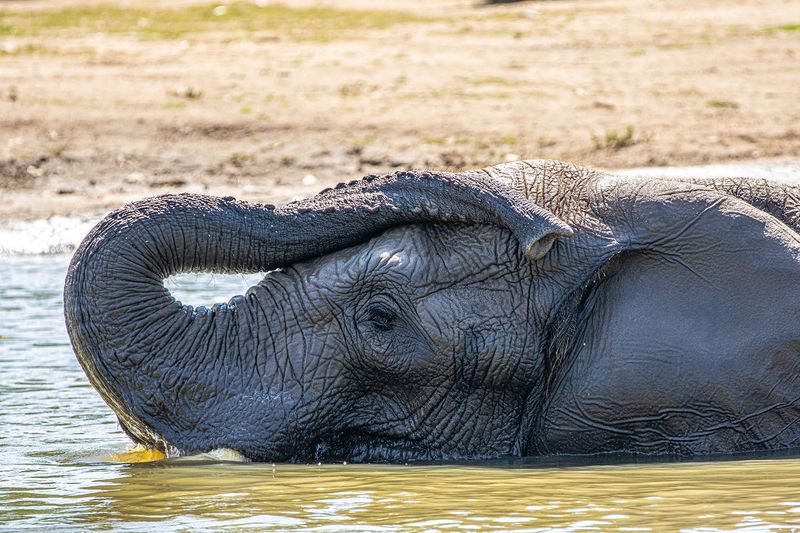
Elephants, despite their large size, are excellent swimmers. These gentle giants can swim for long distances, using their trunks as natural snorkels.
It’s a fascinating sight to watch an elephant in the water, moving with grace and ease. Generally, elephants enjoy spending time in water, whether they are bathing or swimming across rivers.
In the wild, elephants often swim to cross rivers in search of food or new habitats. Their massive bodies help them float, and they paddle with their legs to move forward. It’s not unusual for elephants to swim several miles at a time, showcasing their strength and endurance.
Swimming also helps elephants regulate their body temperature. In hot climates, spending time in water can cool them down and protect their sensitive skin from the sun.
Watching elephants swim, with their playful trunk movements and occasional trumpeting, is a delightful experience that underscores their intelligence and adaptability.
2. Tigers
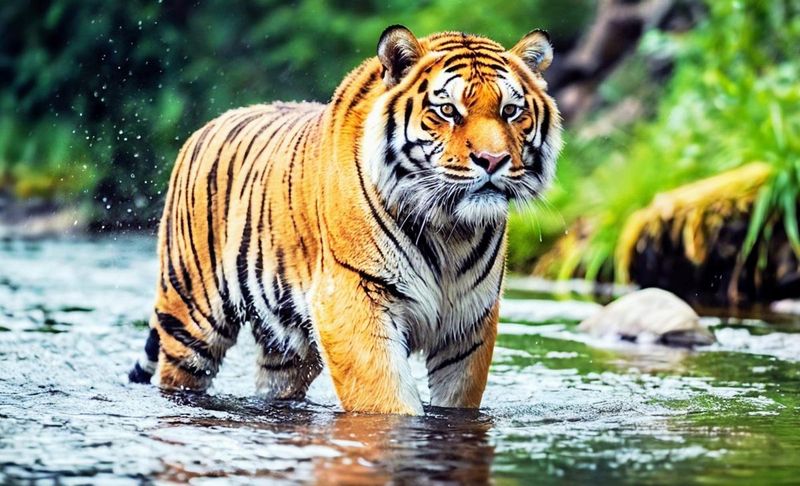
Tigers are not only formidable predators on land but also surprisingly adept swimmers. These magnificent cats often swim to cross rivers or to cool down in the heat. Their powerful bodies and webbed paws make them well-suited for swimming. Observing a tiger swim is a testament to its strength and adaptability.
In their natural habitats, tigers are known to travel long distances in search of prey, and swimming across water bodies is often part of their journey.
They can swim several kilometers at a stretch, displaying their endurance and determination. It’s common to find tigers near water sources, as they hunt or simply enjoy a refreshing dip.
Not only do tigers swim for practical reasons, but they also seem to enjoy it. Swimming provides them with relief from the heat and an opportunity to play. Their swimming ability is another aspect of their complex and fascinating nature.
3. Polar Bears
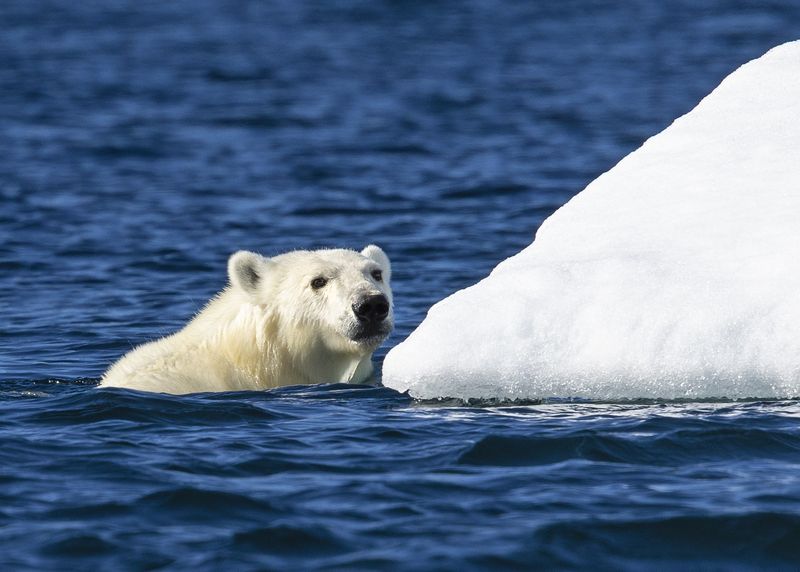
Polar bears are among the most skilled swimmers in the animal kingdom. Living in the Arctic, they rely heavily on their swimming abilities to hunt seals and travel between ice floes. Their large, powerful front paws act as paddles, propelling them through the icy waters with surprising speed.
Polar bears can swim for several days at a stretch, covering vast distances as they search for food. Their thick layer of blubber provides insulation against the cold, while their white fur offers camouflage against the snow and ice.
It’s a remarkable adaptation that allows them to thrive in one of the harshest environments on Earth.
In addition to their hunting prowess, polar bears’ swimming skills are crucial for their survival in a rapidly changing climate.
As ice melts due to global warming, they must swim longer distances to find food and secure habitats. Watching a polar bear swim is both awe-inspiring and a poignant reminder of the challenges they face.
4. Sloths
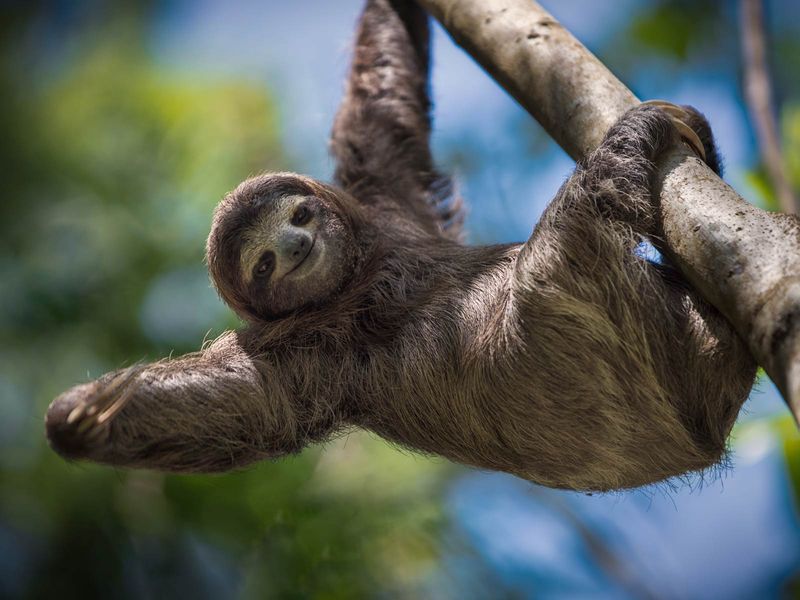
Sloths may seem like unlikely swimmers, given their slow movement on land, but they are surprisingly good in water. These slow-moving mammals can easily navigate through rivers and streams, using their long arms to paddle. It’s quite a sight to see a sloth swimming, moving more efficiently than on land.
Swimming is an essential skill for sloths, especially during the rainy season when their forest homes can become flooded.
In water, sloths can cover significant distances to find food and mates or escape predators. Their ability to swim adds an interesting dimension to their otherwise leisurely lifestyle.
Sloths are naturally buoyant, allowing them to float effortlessly. They generally prefer slow-moving water bodies where they can swim at their own pace. Witnessing a sloth swim is a unique experience, showcasing their adaptability and surprising agility in an aquatic environment.
5. Capybaras
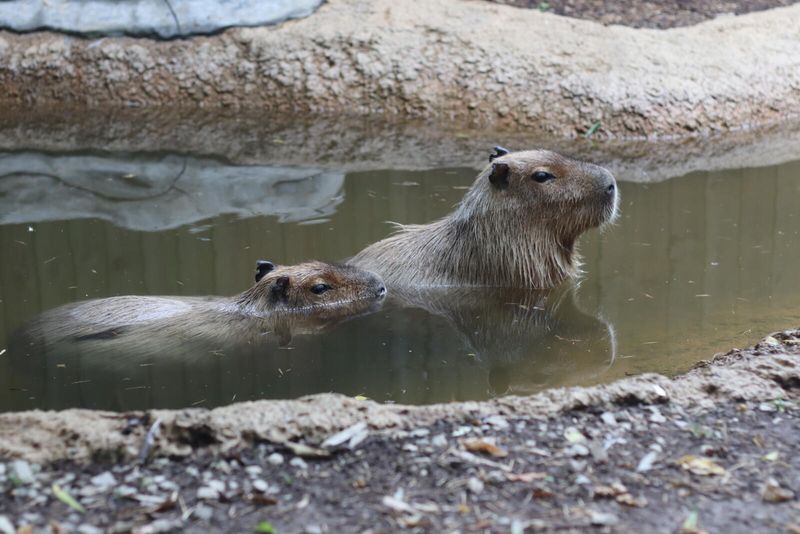
Capybaras are the largest rodents in the world, and they are exceptional swimmers. Native to South America’s wetlands, they have webbed feet that make them agile in the water. They often take to the water to escape predators or to find food during the dry season.
These social animals are frequently found in groups near water bodies, where they can swim and play together.
Capybaras can swim underwater for several minutes, using their buoyancy to float and their strong limbs to propel themselves. It’s a common sight to see a capybara’s head popping up from the water, with its eyes and nose just above the surface.
Swimming helps capybaras cool down and avoid land-based threats. Their ability to navigate both land and water makes them versatile and adaptable creatures.
6. Hippos
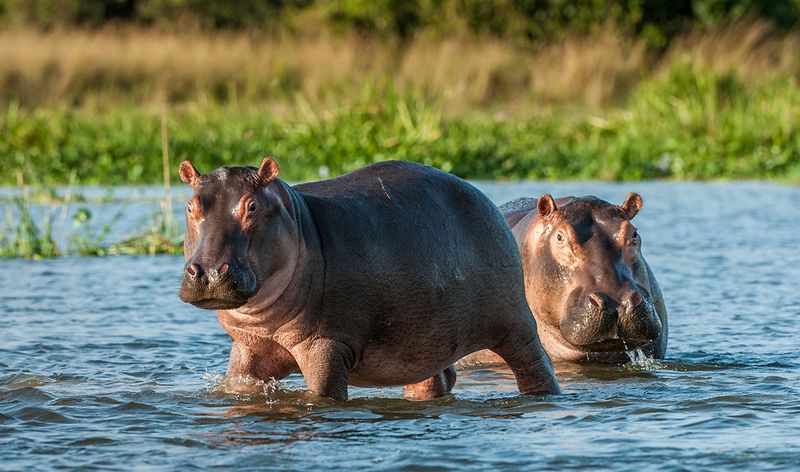
Hippos might look cumbersome, but they are surprisingly agile in water. These massive mammals spend a significant portion of their lives submerged, where they move gracefully.
Despite their bulk, hippos can hold their breath underwater for several minutes, making them adept swimmers.
In the water, hippos use a combination of walking along the riverbed and propulsion by paddling with their legs. This allows them to move efficiently and quickly, which is essential for their survival, as water bodies provide refuge from predators and a cool retreat from the sun.
Hippos are also known to be territorial, and their swimming skills play a role in defending their space. Watching a hippo swim, with only its eyes and nostrils above water, is a testament to their unique adaptations to aquatic life. Their presence in rivers and lakes is a crucial aspect of the African ecosystem.
7. Penguins
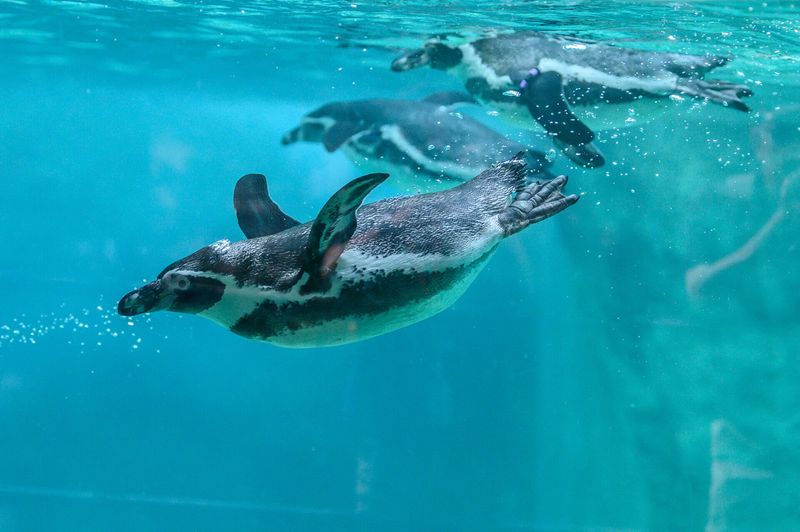
Penguins are iconic swimmers, particularly adept at navigating the icy waters around Antarctica. Their streamlined bodies and powerful flippers make them excellent swimmers, enabling them to dive to great depths in search of food.
While penguins are flightless birds on land, they are agile hunters in the ocean. They rely on their swimming skills to catch fish and evade predators, using their flippers to ‘fly’ underwater. Penguins can reach impressive speeds, making them formidable in their aquatic environment.
Swimming is essential for penguins’ survival, as their food sources are primarily marine-based. Their ability to adapt to both land and sea environments is a key factor in their success as a species.
8. Sea Turtles
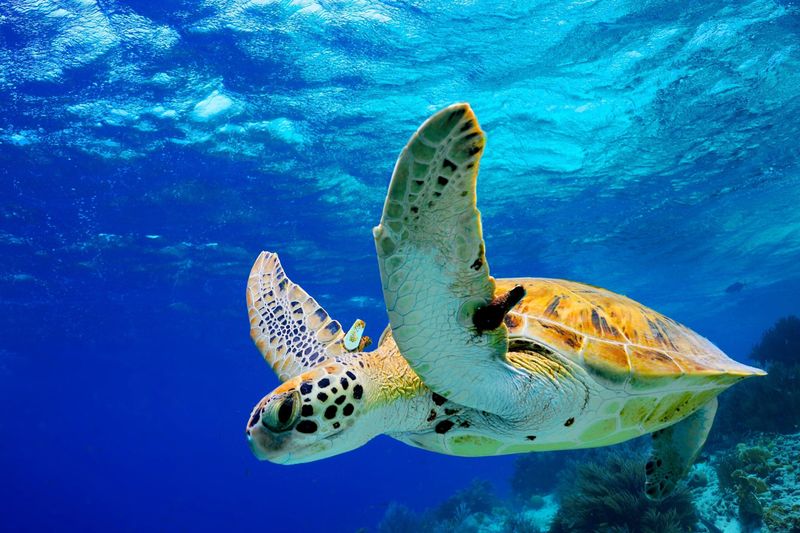
Sea turtles are some of the most graceful swimmers in the ocean. With their elongated flippers, they glide through the water with minimal effort, covering thousands of miles during their migratory journeys.
These ancient creatures spend most of their lives in water, only coming ashore to lay eggs. Their swimming prowess allows them to navigate vast oceanic distances, migrating between feeding grounds and nesting sites.
Sea turtles are vital to marine ecosystems, helping maintain the health of coral reefs and seagrass beds.
Swimming also aids in sea turtles’ survival, enabling them to avoid predators and find food. Their gentle movements and serene presence make them a favorite among divers and ocean enthusiasts.
9. Dolphins
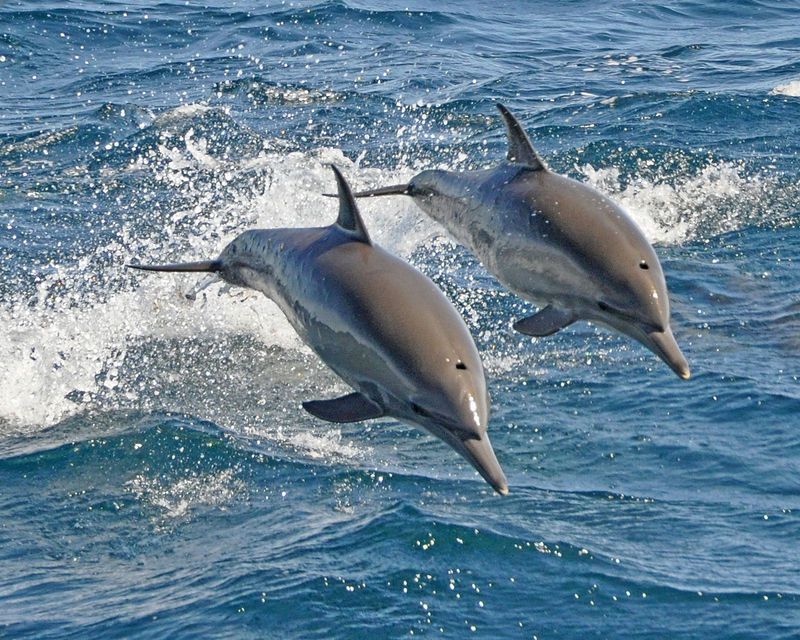
Dolphins are celebrated for their incredible swimming abilities, making them one of the ocean’s most beloved creatures. These intelligent mammals are known for their playful nature and acrobatic skills, often seen leaping through waves and riding currents with ease.
In the wild, dolphins are highly social and often travel in pods, communicating and hunting together. Their streamlined bodies and powerful tails allow them to reach impressive speeds, making them agile predators and curious explorers of the ocean.
Swimming is an integral part of a dolphin’s life, enabling them to find food, socialize, and protect themselves from threats.
Their playful displays are not just for show; they serve as essential survival skills. Watching dolphins swim and play is a joyous experience that showcases their intelligence and the wonders of marine life.
10. Otters
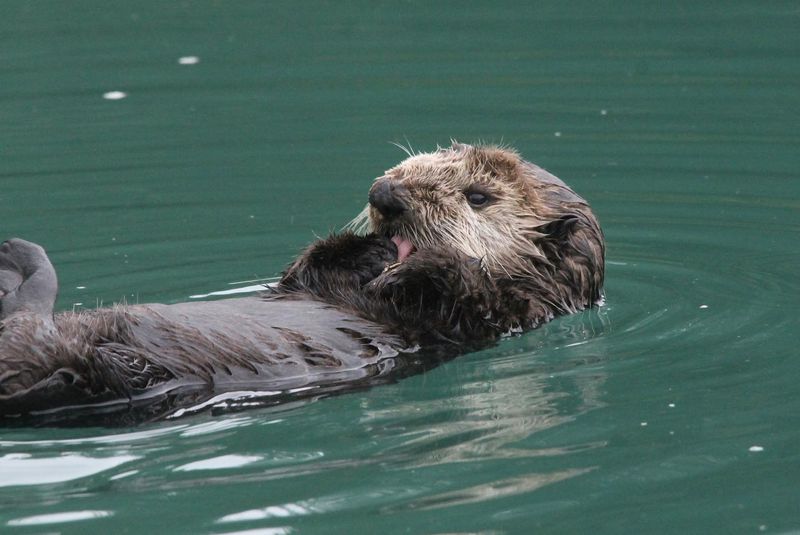
Otters are among the most playful swimmers in the animal kingdom. These lively creatures are perfectly adapted to life in the water, with their streamlined bodies and webbed feet.
In their natural habitats, otters are expert hunters, using their swimming skills to catch fish and other aquatic prey.
They are also known for their social behavior, often playing and interacting with other otters. Their playful antics in the water are not only charming but also serve important survival functions.
Swimming allows otters to thrive in various environments, from rivers to coastal areas. Their ability to navigate both land and water makes them versatile and adaptable creatures.
11. Beavers
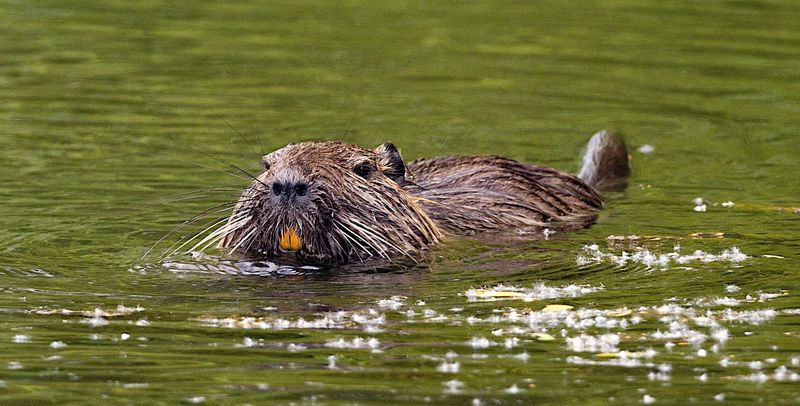
Beavers are remarkable swimmers, known for their incredible engineering skills as well as their aquatic abilities.
These industrious rodents are typically found in freshwater habitats, where they build dams and lodges. Swimming is an essential part of a beaver’s life, enabling them to gather materials and navigate their environment.
Their webbed hind feet and flat tails make them efficient swimmers, allowing them to move quickly through water. Beavers are mostly nocturnal and spend a significant amount of time in water, where they are safe from predators and can find food.
Swimming also aids in the construction of their iconic dams, as they transport logs and branches to their building sites. Watching a beaver swim and work is a fascinating insight into their hardworking nature and their role in shaping ecosystems.
Their presence in waterways is a testament to their adaptability and the importance of wetlands.
12. Crocodiles
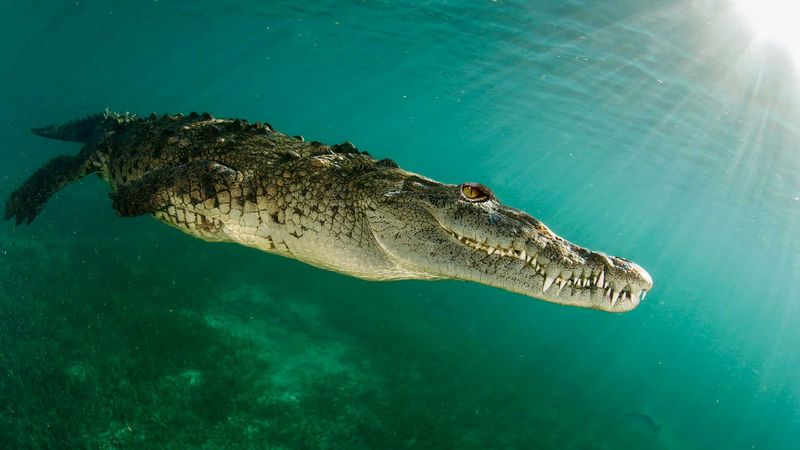
Crocodiles are among the most powerful swimmers in the animal world. These ancient reptiles have remained largely unchanged for millions of years, testament to their adaptability and survival skills. Their strong tails and webbed feet allow them to move through water with speed and precision.
In their natural habitats, crocodiles are apex predators, often hunting in water. They can swim at high speeds to ambush prey, using stealth and surprise to their advantage.
Their ability to hold their breath for extended periods allows them to remain submerged, waiting patiently for the right moment to strike.
Swimming is crucial for their survival, enabling them to hunt, escape threats, and traverse their territories. Observing a crocodile in water, often with just its eyes visible, is a reminder of their power and the intricate balance of ecosystems.
Their presence in rivers and lakes is vital to the health of these environments.
13. Platypuses
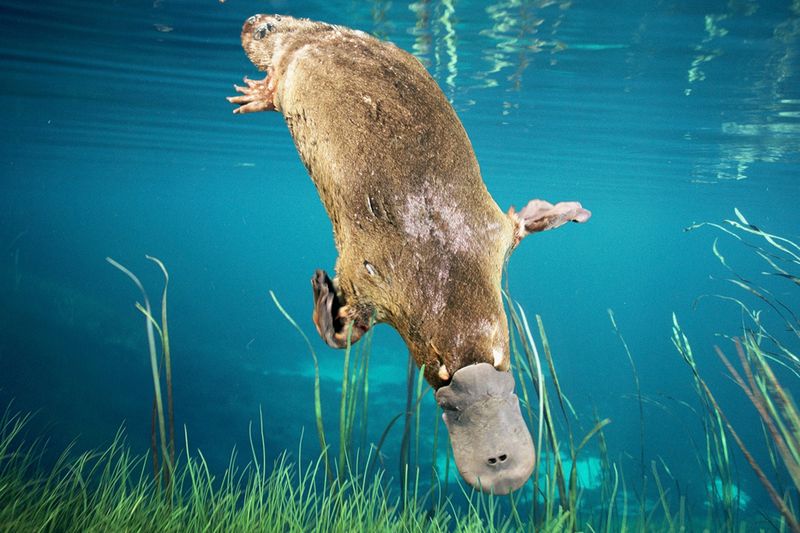
The platypus is one of the most unique swimmers in the animal kingdom, combining features of mammals, birds, and reptiles.
This enigmatic creature is native to Australia and is remarkably adapted to its aquatic lifestyle. With webbed feet and a flat, beaver-like tail, the platypus is an adept swimmer.
In the wild, platypuses spend a considerable amount of time in water, where they hunt for food. They use their sensitive bills to detect prey, such as insects and small fish, in the mud at the bottom of streams and rivers.
Swimming is essential for their survival, as it allows them to find food and avoid land-based predators.
Their unique adaptations make them efficient hunters and fascinating creatures to observe. The platypus’s presence in Australian waterways is a testament to the diversity and wonder of the natural world.

